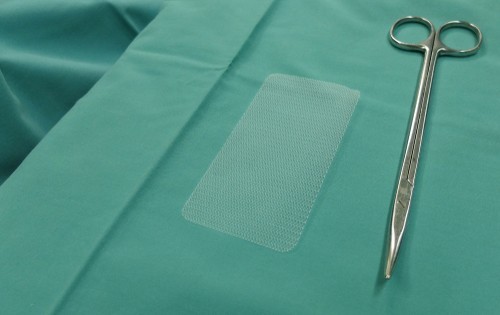Genzyme Corporation first received U.S. Food and Drug Administration (FDA) approval for its hernia mesh in 2000. The mesh, called Sepramesh IP, has caused numerous complications in patients, some with severe consequences. The mesh is used to treat various types of hernias. Over the years, so-called “improvements” have been made to Genzyme mesh products, but significant defects remain.
An agreement was reached between Genzyme Corporation and Bard Davol Inc. to manufacture Sepramesh IP in 2007. Since that time, Bard has incorporated many of Sepramesh IP’s technologies into its own products. If you had a hernia repair surgery and Sepramesh IP was used, you may have suffered complications from your surgery like so many others. You may be eligible to file a hernia mesh lawsuit seeking compensation.
The personal injury attorneys at the Shouse Law Group are here to represent injured clients and inform you about the risk and complications associated with Genzyme Corporation products.
- 1. What is hernia mesh?
- 2. What is Sepramesh IP Composite Mesh?
- 2.1 What is it made of?
- 2.2 Are there other versions of Sepramesh IP?
- 3. How was Sepramesh IP approved by the FDA?
- 4. Are there any side effects or complications?
- 4.1 What is adhesion?
- 4.2 What is chronic pain?
- 4.3 Can I get an infection from Sepramesh IP?
- 4.4 What is a seroma?
- 5. Can I be compensated for my injuries?
- 6. What do I do if I was injured by Sepramesh IP?

1. What is hernia mesh?
Hernia mesh is a screen-like medical mesh which provides support to damaged and weakened tissue caused by a hernia. A hernia is a bulging of an organ or tissue through an abnormal opening.
Hernia mesh is intended to prevent the re-occurrence of your hernia. Defective hernia mesh leads to thousands of patients suffering complications every year. There are many types and classifications of hernia mesh which a surgeon may use, each with its own benefits and complications.
2. What is Sepramesh IP Composite Mesh?
Sepramesh IP Composite Mesh is a composite mesh, which means it contains a coating on at least one side. This particular mesh is coated with an absorbable hydrogel which is designed to keep organs and other tissues from adhering to the mesh after surgery. The absorbable coating is absorbed and excreted by the body over the course of around 30 days.
2.1 What is it made of?
Sepramesh IP is made from plastic-like materials polypropylene and polyglycolic acid (PGA), meaning it is a synthetic mesh. Some studies have shown that synthetic meshes are more likely to result in complications after hernia mesh surgery. 1
2.2 Are there other versions of Sepramesh IP?
Over the years, the FDA has approved multiple versions of this hernia mesh. Your surgery may have used one of these models, which include:
- Sepramesh: Approved in 2000, this was the original product made from polypropylene which had an absorbable coating.
- Sepramesh IP (2004): Updated version constructed from dual-woven polypropylene and PGA coated. One side with an absorbable coating.
- Sepramesh IP (2005): Further updated version. First to utilize natural beige PGA fibers, rather than the fibers dyed in violet in the previous version.
- Sepramesh IP (2007): This version is larger than those before it.
3. How was Sepramesh IP approved by the FDA?
Sepramesh IP was approved by the FDA through the 510(K) Premarket Approval Program. This means that this hernia mesh did not go through rigorous medical testing to determine whether it was effective or safe. Genzyme was only required to show that Sepramesh IP was as safe and effective as similar devices on the market. 2
This program is highly criticized and has allowed defective mesh models to enter the market and be used on patients.
4. Are there any side effects or complications?
There are many different side effects and complications which can result from a doctor’s use of defective Sepramesh IP or from the doctor’s negligence itself. These can range from minor and short-lived to severe and long-lasting.
4.1 What is adhesion?
Sepramesh IP is known to cause adhesion, which occurs when scar tissue forms around the mesh implant and joins the implant with other internal tissue or organs. This can occur within a few weeks of your surgery or can take months or years.
Adhesion typically occurs after the absorbable coating on the Sepramesh has worn off, leading to serious consequences such as bowel obstruction and severe pain. 2
4.2 What is chronic pain?
Pain after surgery for a short period is normal as your body heals. Severe pain or pain which lasts for longer than three months (chronic pain) is not normal and may be caused by defective Sepramesh.
4.3 Can I get an infection from Sepramesh IP?
Many patients develop infections after surgery with Sepramesh IP. This can be caused by an allergic reaction to the mesh, improper sterilization of the mesh, or malpractice by your surgeon. Infections can cause pain and delay your healing. They can be life-threatening in extreme circumstances.
4.4 What is a seroma?
A seroma is a collection of fluid, called serum, that builds up under the surface of the skin. They can develop where surgical incisions were made in the body or where bodily tissue was removed. These commonly occur after a significant surgical procedure such as a hernia repair and can be the result of defective hernia mesh.
5. Can I be compensated for my injuries?
If you have suffered injuries as the result of defective Sepramesh IP, you may be entitled to financial compensation for:
- Past and future medical bills
- Lost wages or loss of earning capacity
- Pain and suffering
- Punitive damages (in certain circumstances).

6. What do I do if I was injured by Sepramesh IP?
You are not responsible for hernia mesh failure, especially if it was due to a defect. Typically, the manufacturer of defective mesh products are the responsible parties. Through your personal injury attorney, you can file a claim or lawsuit to obtain compensation for any and all damages you suffered.
We have local offices throughout California, but we represent clients throughout the U.S. who have been injured by hernia mesh products.
If you or someone you know has been harmed by a doctor, nurse, or other healthcare provider’s negligence or by a defective medical product, contact our personal injury lawyers today for a free consultation. Call us or fill out our online contact form on this page.
References
- MDPI. Past, Present and Future of Surgical Meshes: A Review
- FDA. Premarket Notification 510(K)
- Schreinemacher MH, Emans PJ, Gijbeis MJ, Beets GL, Bouvy ND. “Degradation of mesh coatings and intraperitoneal adhesion formation in an experimental model.” Br J Surg. 2009 Mar;96(3):305-13. doi: 10.1002/bjs.6446.
